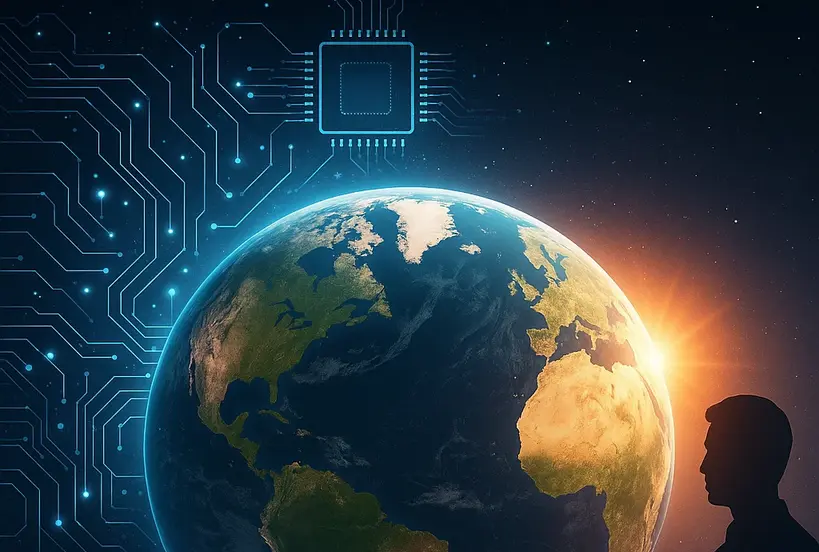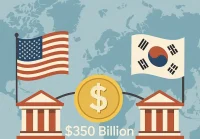We’re living through an extraordinary moment in history. According to technology futurist Peter Leyden, 2025 represents the single most pivotal year in our lifetime because we’re witnessing the convergence of three world-historic technological tipping points that occur only once every 80 years. This isn’t just another year of incremental progress—we’re at the threshold of a fundamental transformation that will reshape how we live, work, and organize society.
The concept of tipping points explains how technologies evolve from clunky, experimental prototypes to revolutionary breakthroughs that everyone suddenly needs. Think of the iPhone moment—when a technology crosses from “kind of working” to “holy this is the most amazing thing in the world.” We’re experiencing three such tipping points simultaneously, each with the power to transform civilization.
America’s 80-Year Reinvention Cycles
History reveals a remarkable pattern in American development. Every 80 years, the nation goes through a massive reinvention that involves tearing down old systems and building dramatically new ones. We’ve seen this cycle three times before, and we’re now entering the fourth.
The most recent cycle began in 1945, following World War II. America emerged from the Great Depression and political polarization to build the greatest economic boom in history. Over 25 years, the nation created the interstate highway system, expanded higher education through the GI Bill, implemented progressive taxation, and built the modern suburban economy. This “Great Society” period represented a complete reinvention of how America organized itself.
Go back another 80 years to 1865, and we find the end of the Civil War—another moment of extreme political conflict that resolved fundamental tensions between competing economic systems. The post-war period saw explosive progress: 175,000 miles of railroad construction, the Homestead Act giving away millions of acres, and the creation of land-grant universities that democratized higher education.
Another 80 years earlier, from 1787 to 1815, America was literally being invented during the Enlightenment period. This era created the foundational systems of modern civilization: representative democracy, capitalism, scientific method, and the nation-state system that still governs our world today.
The Three World-Historic Tipping Points
What makes 2025 unique is that we’re experiencing three simultaneous technological revolutions, each reaching their tipping point:
Artificial Intelligence Revolution: The launch of ChatGPT in November 2022 marked the starting gun for what historians will call the Age of AI. This represents a fundamental amplification of human mental capabilities, similar to how steam engines amplified our physical powers during the Industrial Revolution. We’re crossing a threshold where AI becomes an essential tool for human progress, and there’s no going back.
Artificial Intelligence Revolution
The launch of ChatGPT in November 2022 marked the beginning of the Age of AI — a transformation as profound as the Industrial Revolution. Just as steam engines amplified human strength, AI now amplifies human intelligence. We’ve crossed the threshold — there’s no going back.
Explore AI Careers →Clean Energy Revolution: For the first time in history, we have an energy source that is 100% technology rather than a commodity. Solar panels follow the manufacturing rule that doubling production reduces costs by 20%. This means clean energy will keep getting cheaper indefinitely, leading to abundant, affordable clean energy that transforms our relationship with the environment and economic systems.
Biotechnology Revolution: CRISPR technology allows us to cheaply and easily edit the genome of any living thing. We can now grow actual meat in vats using the same cells as animals, sequence human genomes for $100 instead of $3 billion, and design biological systems for specific outcomes. This represents a fundamental shift in how we interact with life itself.
The Economic System Transformation
These technological revolutions are driving a deeper transformation of our economic system. The current financial capitalism model, born from the Enlightenment, has worked well for the top 10% but failed the bottom 80%. The convergence of these technologies creates the foundation for what Leyden calls “sustainable capitalism”—an economic system that can provide abundance for all while respecting planetary boundaries.
The clean energy revolution eliminates resource scarcity as a fundamental constraint. AI amplifies human capabilities to solve complex problems. Biotechnology allows us to create abundance in food and materials without environmental destruction. Together, these technologies enable an economic system that can be both prosperous and sustainable.
Political and Social Transformation
Just as previous 80-year cycles involved extreme political polarization and conflict, we’re seeing similar patterns today. The old systems are fighting to maintain their power while new systems struggle to emerge. This creates the political turbulence and social conflict we’re experiencing.
However, history shows that these periods of conflict ultimately resolve into new forms of organization. We’re likely moving from representative democracy to digital democracy, from nation-states to some form of global governance, and from resource-based economics to technology-based abundance.
The Scale of Change Ahead
The transformation we’re entering isn’t just about new gadgets or business models. We’re potentially witnessing the early days of building a 21st-century civilization. This means reimagining everything: how we organize society, how we make decisions, how we create and distribute wealth, and how we relate to each other and the planet.
The next 25 years will likely see changes as dramatic as those from 1945-1970, 1865-1890, or 1787-1815. We’re not just updating existing systems—we’re building entirely new ones that will define how humanity organizes itself for the next century.
Frequently Asked Questions
Q: Why is 2025 specifically the pivotal year rather than 2024 or 2026?
A: 2025 represents the convergence point where all three technological revolutions reach their tipping points simultaneously, creating a perfect storm of change that amplifies each revolution’s impact.
Q: How can we be sure this isn’t just another period of technological progress?
A: The 80-year cycle pattern has repeated three times in American history, each involving fundamental system change, extreme political conflict, and 25-year periods of explosive innovation and social transformation.
Q: What makes these three technologies different from previous innovations?
A: AI amplifies mental capabilities, clean energy eliminates resource constraints, and biotechnology allows us to design life itself. Together, they enable entirely new forms of economic and social organization.
Q: How long will this transformation take?
A: Based on historical patterns, the active transformation period typically lasts about 25 years, with the most dramatic changes occurring in the first decade as new systems replace old ones.
Q: What should individuals do to prepare for this transformation?
A: Focus on developing skills that complement AI, understanding clean energy technologies, and staying informed about biotechnology developments. Most importantly, prepare for a world of abundance rather than scarcity.
Q: Will this transformation be peaceful or involve conflict?
A: Historical precedent suggests significant political and social conflict as old systems resist change, but ultimately resolution into new forms of organization that benefit broader segments of society.




